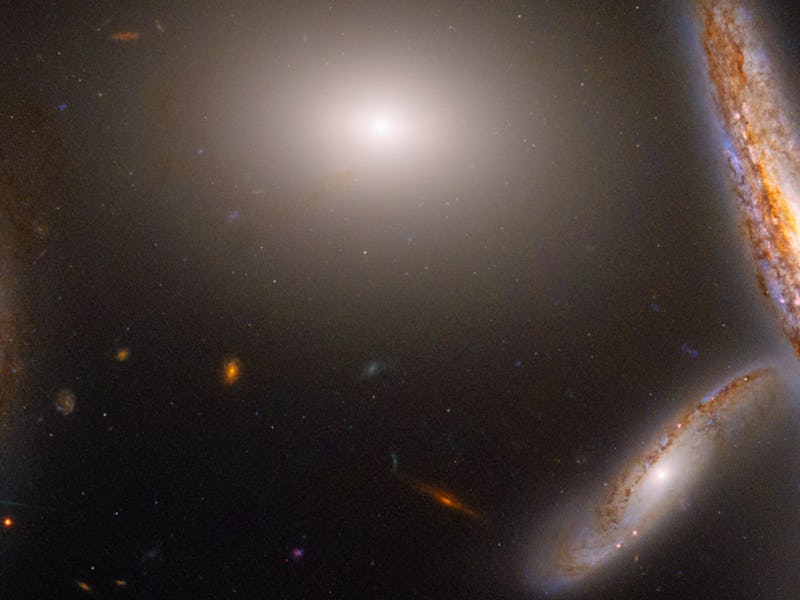Look! Dazzling Hubble birthday image shows five galaxies bunched together
Five galaxies make up the birthday soup NASA is serving to celebrate Hubble.

NASA is celebrating the Hubble Space Telescope’s 32nd year in space with a festive look at five galaxies.
Three spiral galaxies, an elliptical galaxy, and a lenticular (or, lens-like) galaxy are huddled together 300 million light years away within less than twice the width of the Milky Way’s disk. They are in physical conversation with one another, interacting with their neighbors’ gravity and slightly warping as a result. Their relationship could teach astronomers a lot about how galaxies formed.
Hickson Compact Group 40, as seen by the Hubble Space Telescope.
Hubble spotted this close-knit collection by peering into the middle of the constellation Hydra (the sea serpent), which is visible in both the Northern and Southern Hemisphere. This observation is one of more than 1.5 million views of the sky the NASA/ESA space telescope has made since it took its first photo on May 20, 1990.
The actual deployment of the telescope, however, took place on April 25, 1990, when the Space Shuttle Discovery opened up its cargo bay and let the 43-foot telescope out into Earth orbit. The five galaxies in the birthday image are collectively known as Hickson Compact Group 40 (HCG 40).
Hickson Compact Group 40, located in the constellation Hydra.
According to the National Astronomical Observatory of Japan, galaxies are rarely found alone in space. HCG 40 qualifies as an assembly of galaxies, and larger collections are known as clusters or groups.
The fabulous five of HCG 40 will collide in about 1 billion years, says a new NASA image description. They’ll likely go on to form a giant elliptical galaxy.
Astronomers think galactic huddles were more common in the early universe. Hubble’s location 340 miles above Earth’s surface has been crucial to understanding these structures, using their beautiful presence to marvel at the universe and learn about how the cosmos came to be as it looks today.
There’s no end in sight for the iconic space telescope. “Hubble's unique capabilities in observing visible and ultraviolet light are a critical scientific complement to the infrared-light observations of the recently launched Webb Space Telescope, which will begin science observations this summer,” the description says.